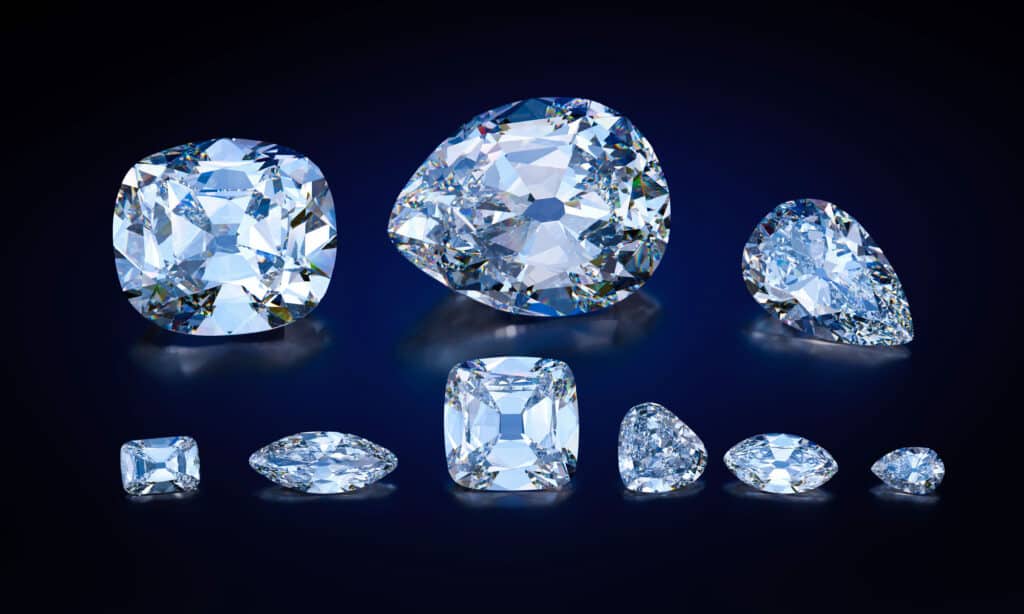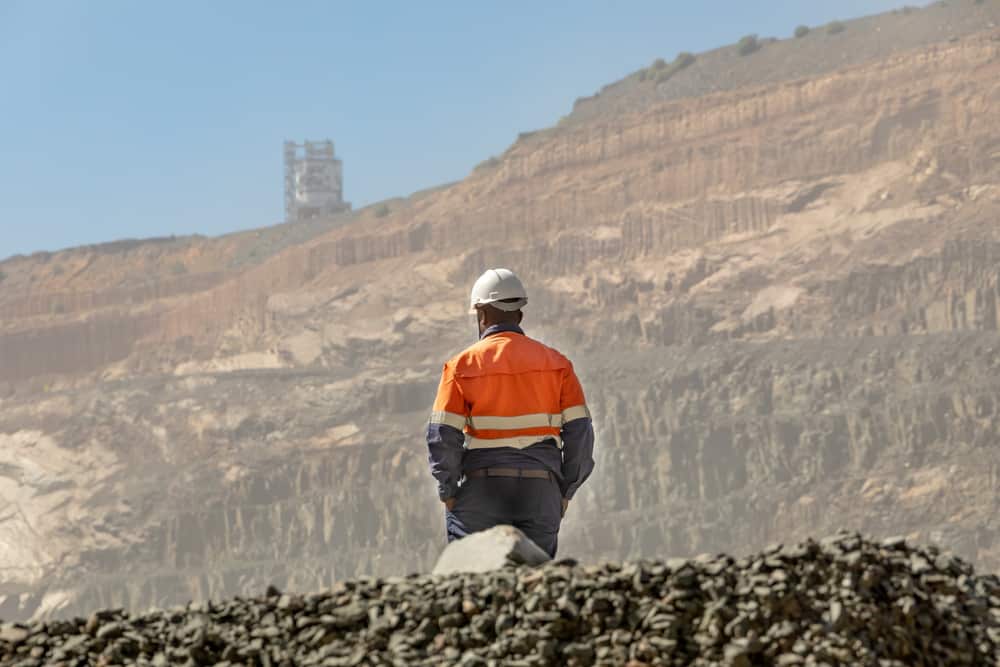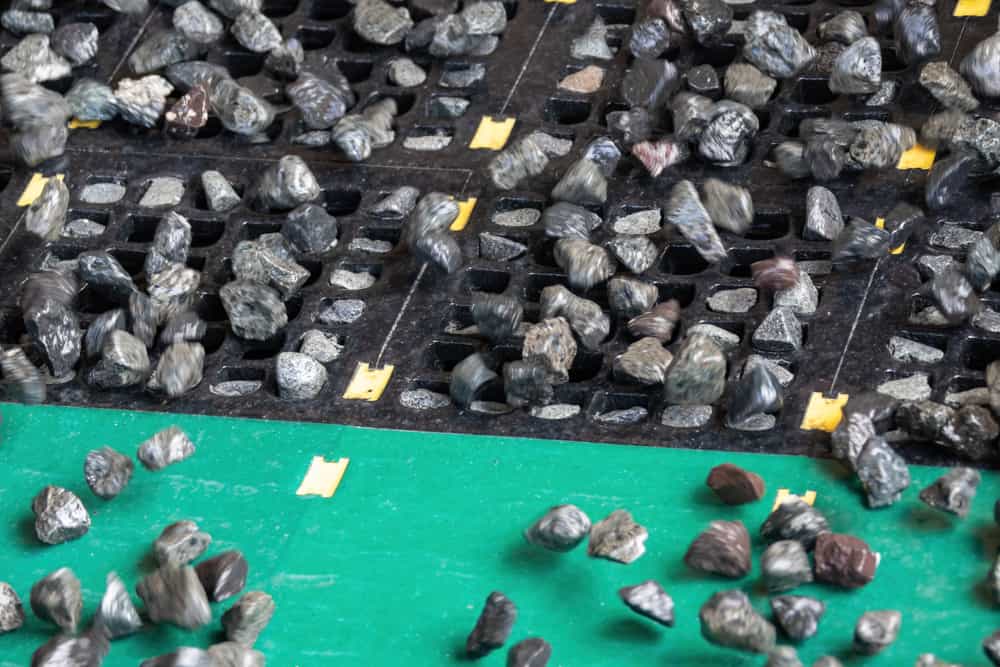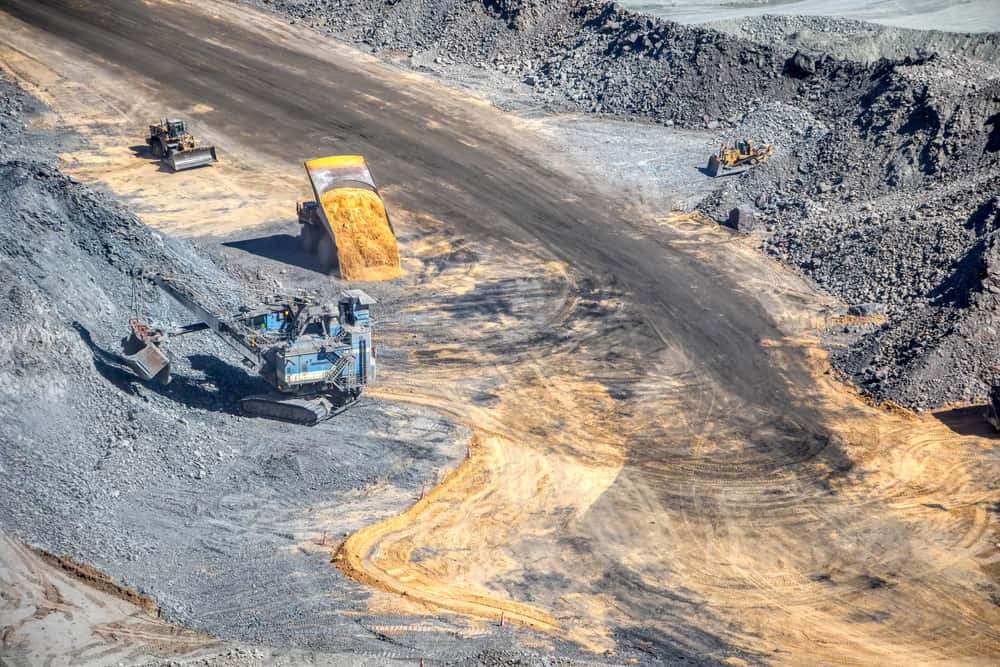Diamonds some of the most stunning items in the world and are well known for their use in jewelry. They occur naturally, deep in the heart of the earth and are incredibly rare and expensive- more expensive than gold. Diamonds are mainly found and extracted from the earth though the process of mining. There are currently only 50 diamond mines in the world. There are also 30 which are no longer used. Around 133 million carats of diamonds are mined every single year, with Botswana and Russia being the main producers. So just how big do diamond mines need to be to produce such a massive amount? Join us as we discover the largest diamond mine in the world!
About Diamonds

Most diamonds are between 1 and 3.5 billion years old
©iStock.com/DiamondGalaxy
Diamonds are the solid form of the element carbon which has its atoms arranged in a crystal. Most form at depths of between 93 and 155 miles under the earth’s surface, with some being formed at 500 miles deep in exceptional circumstances. They are then carried up towards the surface and deposited in igneous rocks by volcanic eruptions. Incredibly, most diamonds are actually between 1 and 3.5 billion years old! They also have the highest level of hardness of any natural material in the world.
Most diamonds are within what is known as the “normal color range”. These are white, colorless, pale yellow, brown, or shades thereof. More unusual colors such as red, green, and blue are known as fancy color diamonds. However, the rarest of all diamonds is the red diamond. Red diamonds are formed by a rare occurrence during their formation process which causes their atoms to arrange differently. This causes the light passing through to display stunning hues of red.
The Largest Diamond Mine in the World

Orapa diamond mine produces 10.8 million carats of diamonds every year
©Lucian Coman/Shutterstock.com
The largest diamond mine in the world by area is the Orapa diamond mine which covers 0.45 square miles. It is currently 1,000 feet deep and is expected to reach 1,150 feet by 2026. Orapa mine is located in Orapa, Botswana and opened in July 1971. The mine is owned by Debswana which is a partnership between the Botswana government and the De Beers mining company. Orapa was expanded in 1999 which doubled its previous mining capacity. It now produces 20 million tons of ore each year as well as 40 million tons of waste rock. Orapa also produces approximately 10.8 million carats of diamonds (4,762 pounds) per year. The record amount produced was in 2006 when an incredible 17.3 million carats of diamonds were produced in the year. Orapa also processes ore from two other mines owned by Debswana, the Damtshaa and Letlhakane diamond mines.
The Orapa mine is extremely important to the local economy. This is because it provides jobs for locals – 3,100 people are employed between Orapa and Letlhakane alone. Debswana also further supports the local area by maintaining a hospital and providing schools for the children of its employees. Additionally, the revenue the mine generates allows the Botswana government to invest in critical services for the country.
Orapa is an open pit style mine and is located on two kimberlite pipes. Kimberlite is an igneous rock which often contains diamonds. It forms naturally in the earth’s crust at depths between 93 and 280 miles. Kimberlite forms in vertical structures known as kimberlite pipes. Kimberlite is one of the most important sources of diamonds in the world. The kimberlite pipes at Orapa are estimated to have formed 93 million years ago.
What is Open Pit Mining?

Grid from the crushers for the kimberlite, high speed vibrators where the kimberlite is washed to extract the diamonds
©Lucian Coman/Shutterstock.com
As the two kimberlite pipes that Orapa is situated on are located close to the surface, Orapa is able to use an open pit style mining technique. This is also known as open-cast mining and is a surface mining technique. Open pit mining involves extracting rock from the surface of the earth in a giant open air pit. This technique differs from other, more extensive methods, that tunnel into the earth.
Open pit mines are usually dug in the form of benches. The sides of the mine are made sloped rather than vertical and the benches are the different levels of the mines. There are many different benches in an open pit mine which means that more than one level can be worked at the same time. As new benches are created the sides of the mine look like a giant set of steps. Ramps are made in the benches to enable equipment to move between the different levels. Once extracted, ore is then crushed and then the diamonds are sorted by density. Once the rough diamonds are extracted they then go through a process known as “cutting” to form the diamonds that we know best.
Problems with Open Pit Mining

Pit mining causes extensive and irreparable damage to the landscape
©Lucian Coman/Shutterstock.com
There are many problems that are associated with open pit mining and they can have serious lasting consequences. Depending on the substance that is being extracted, open pit mines can release many harmful pollutants into the air. As well as damaging the surrounding area and the atmosphere, they can damage the health of the miners who are breathing them it.
However, one of the biggest problems caused by open pit mining is the damage it does to the landscape. The most obvious issue with it is that it disturbs the vegetation and soil and destroys habitats, which in turn displace animals. However, this mining technique also alters the flow of water sources and changes ground water levels. This in turn can alter entire ecosystems.
Sometimes when the mine is no longer in use attempts are made to rehabilitate the land but they are not always successful. Usually waste rock and soil is dumped into the area that was mined to try to level out the pit that has been created in the mining process. Vegetation is also sometimes planted, but the pit is generally fenced off to prevent larger animals from stripping it.
However, there are usually still a number of problems that can’t be solved as easily. Depending on the substance mined, leftover ore can contain sulfides which react with rainwater and oxygen to create sulfuric acid through the process of oxidization. This is known as acid mine drainage. Sulfuric acid can be extremely dangerous as it is highly reactive and corrosive and major problems are caused when it floods into nearby water sources. In some cases other chemicals have to be added to the water to neutralize the effects of the acid.
The photo featured at the top of this post is © DiamondGalaxy/Shutterstock.com
Thank you for reading! Have some feedback for us? Contact the AZ Animals editorial team.






